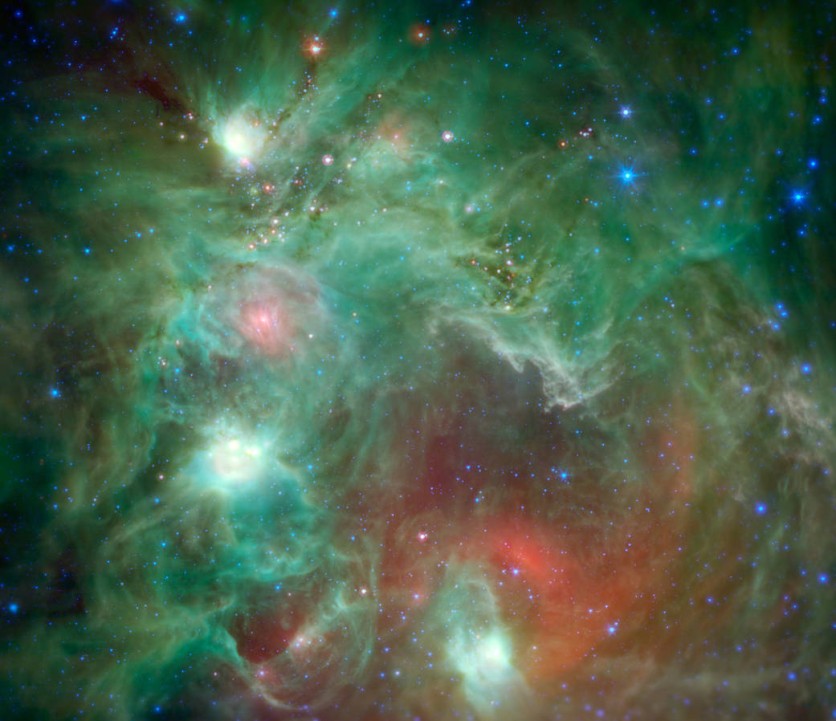Prepare to embark on an extraterrestrial adventure as NASA's retired Spitzer Space Telescope continues to unveil a celestial spectacle like no other - a nursery of baby stars nestled within the star-forming region called NGC 2174.
In this captivating infrared image, the veiled brilliance of countless infant stars emerges from the depths of cosmic dust, giving rise to the whimsically named "Monkey Head" nebula.
But beware, as we delve into the realm of infrared, the monkey's face disappears, revealing a tapestry of diverse clouds that shimmer with celestial wonder.

Celestial Spectacle
NGC 2174, located 6,400 light-years away in the Orion constellation's farthest reaches, showcases a celestial spectacle. At the center of the image, columns of dust shaped by radiation and stellar winds from the area's young and vibrant stars are observed.
NASA notes that through Spitzer's infrared vision, we catch a glimpse of the cosmos' future, a captivating preview of upcoming star clusters. Exploring the image, reddish pockets of light appear amidst darker filaments-a sign of infant stars cradled in warm dust.
Illuminated at infrared wavelengths, this gentle glow portrays the process of celestial creation. Eventually, these young stars will emerge from their dusty enclosures, radiance piercing the surrounding nebulous veils.
This awe-inspiring image initially unveiled to the world in 2015, comes to life by assigning visible colors to the invisible realm of infrared. NASA recently shared it as the featured image of the day on Monday, May 22.
Wavelengths of 3.5 microns are rendered in captivating blue hues, while 8.0 microns exude a mystical green glow. The mesmerizing red shades signify the thermal radiation emitted by the hottest regions of dust.
As our eyes traverse this cosmic canvas, we witness the organic molecules in the dust clouds illuminated by the gentle touch of starlight, unveiling the intricate tapestry of the Monkey Head nebula.
To complete this cosmic masterpiece, areas on the fringes of Spitzer's observation have been filled in using infrared data from NASA's Wide Field Infrared Survey Explorer, also known as WISE.
Monkey Head Nebula
This collaboration between two missions enriches our understanding and appreciation of the Monkey Head nebula, ensuring no part of this celestial playground is left unexplored.
The Monkey Head Nebula provides astronomers with valuable insights into the star formation process and the evolution of stellar clusters. By studying this region, scientists can better understand the mechanisms and dynamics involved in the birth and development of stars.
This nebula is a fascinating astronomical object that showcases the intricate interplay between young stars, dust clouds, and the forces shaping our universe. Its striking appearance and scientific value make it a subject of great interest and study for astronomers and space enthusiasts alike.
Related Article : NASA's Hubble Space Telescope Captures 'Butterfly Nebula' In Stunning Motion | Fun Facts About This Beautiful Space Butterfly

ⓒ 2025 TECHTIMES.com All rights reserved. Do not reproduce without permission.




